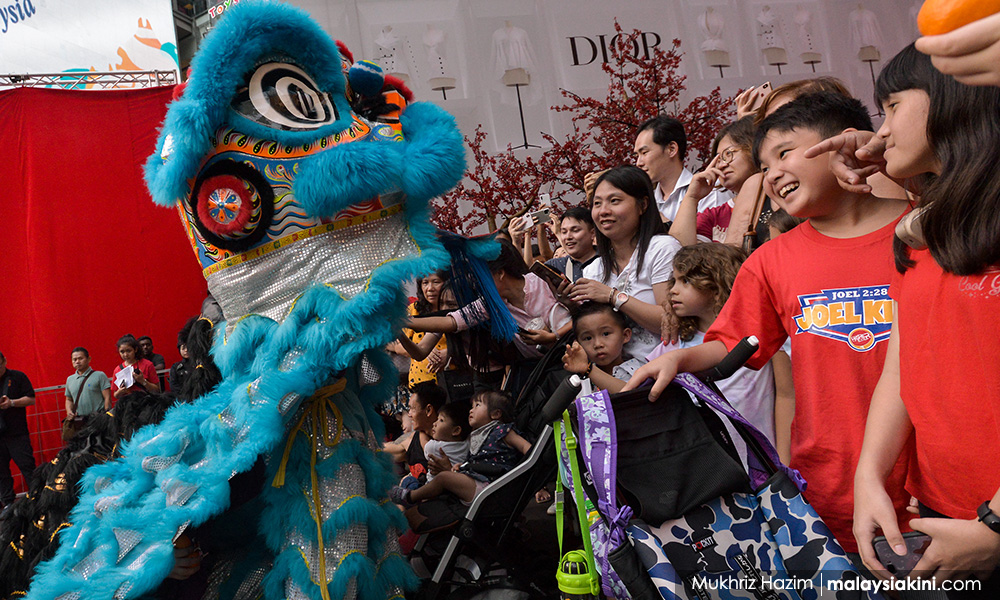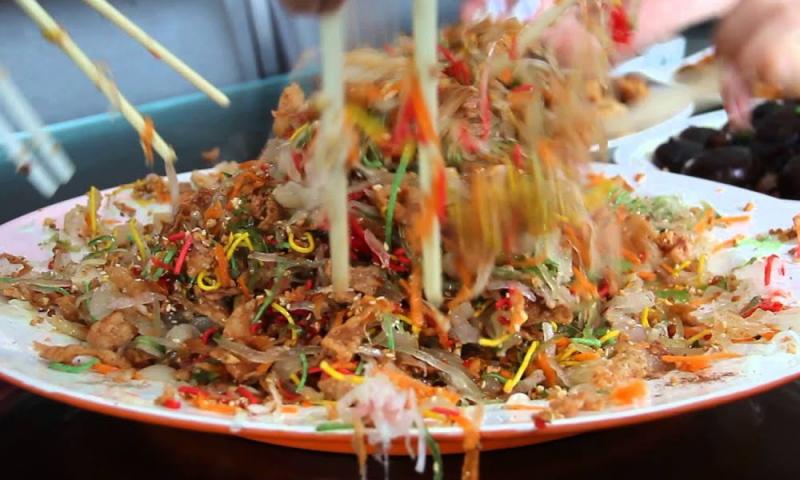It's 'lou hei' time again
No Chinese New Year meal is complete without the partaking of the traditional yee sang dish.
Consisting of a colourful array of ingredients such as stripped carrot, radish, pomelo and ginger, as well as slices of raw fish (usually salmon), and topped with condiments like crushed nuts and laced with plum sauce and lime juice, yee sang is as appetising as it looks.
Most of the dishes served during the Lunar New Year hold special significance for the Chinese as they symbolise luxury, wealth, happiness and prosperity.
Yee sang is among them and for the Chinese community, it has its own significance based on the ingredients used, its history and the way its name is pronounced.
Yee means fish and it is pronounced the same way as the Mandarin word for "easy". Sang means "raw" which, often, is equated with rebirth.
Sunway Velocity Mall deputy marketing director Darren Chear says: "We believe that a person will be blessed with prosperity and longevity if he or she eats yee sang, and the person will also be lucky in whichever field he or she is involved in."
History
Yee sang is believed to have had its origins about 1,500 years ago in the southern coast of China, particularly in the provinces of Chaozhou and Shantou, during the Song dynasty.
"It is also associated with the legend of goddess Nu Wa who is said to have created man on the seventh day of the new year. Yee sang is served by fishermen and sailors in southern China to commemorate the legend," Chear explained.
He said the idea of creating such a dish came about during the Song dynasty to put to good use the surplus of foodstuff such as crackers, carrots, radish, pomelo and ginger left behind each time the Chinese New Year celebrations were over.

"They didn't want to waste the food, so they mixed the ingredients up and added some flavouring such as plum sauce, black and white pepper and oil to bring out the taste," he said in an interview with Bernama.
Yee sang is usually eaten on the seventh day of the new year because it marks the birthday of mankind. The seventh day is also known as Ren Ri, that is, People's Day which also means rebirth, he added.
'Lou hei'
Chear said although yee sang originated from mainland China, its people did not practice the custom of tossing the ingredients with their chopsticks before partaking of the dish.
He said not many people were aware that in Malaysia, yee sang was popularised during the 1940s by a businessman from Seremban, Negeri Sembilan, named Loke Ching Kee, who started the practice of tossing the ingredients high up in the air whilst shouting "lou hei", which means "toss higher".
"The lou hei "ceremony" is participated by all the diners present at the table who will mix and toss the ingredients (with their chopsticks).
"We believe that the higher the yee sang is tossed, the bigger the prosperity that awaits us throughout the year," Chear said, adding that the dish is usually served as an appetiser and to symbolise unity and generosity.
Meanwhile, Hotel Kosmo Kuala Lumpur executive chef Lee Foei Wong said the Malaysian version of yee sang is different from China's and that the only ingredient both versions have in common is raw fish.
"In China, they don't observe the practice of tossing the ingredients like we do here in Malaysia. They also use different ingredients and decorate the dish differently," he said.
Lee, who has been a chef specialising in Chinese cuisine for 19 years, said there were various ways of preparing yee sang.
"We prepare yee sang the way our customers want it... we have a vegetarian version and another that resembles fruit rojak," he added.
- Bernama
Related link:
Think you know enough about Chinese New Year? Take Malaysiakini's Mr Mouse Chinese New Year quiz to find out.
RM12.50 / month
- Unlimited access to award-winning journalism
- Comment and share your opinions on all our articles
- Gift interesting stories to your friends
- Tax deductable

 Bernama
Bernama